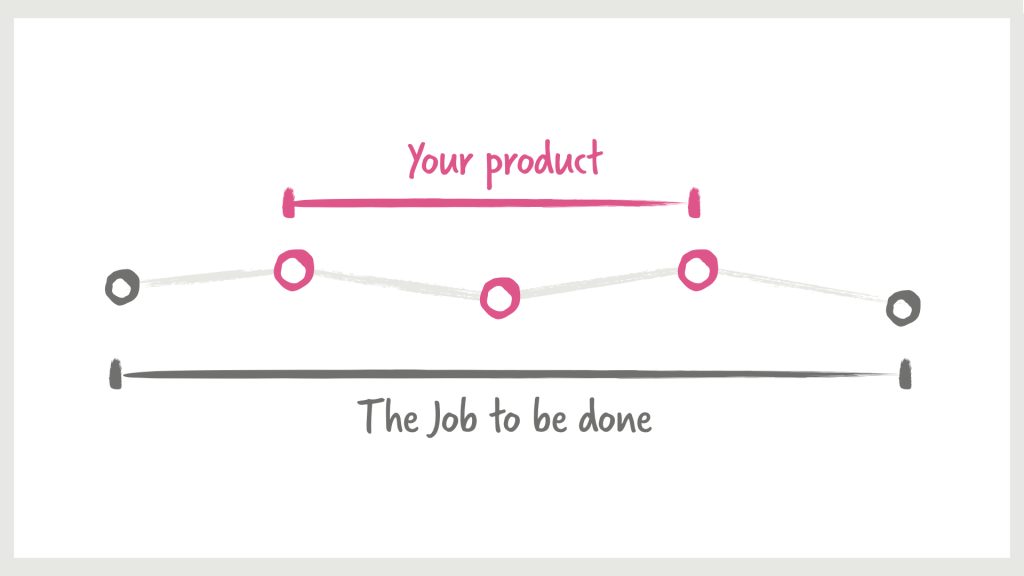
What do customers want from your products? “Jobs to be Done”
You need to know the “why” behind the “what”.
Henry Ford didn’t think about the “job” as a “faster horse” but as “getting from Point A to Point B as quickly as possible.”
So you have decided to innovate a product that solves a consumer problem. Great, congratulations! However, before you jump on designing and developing the technology, you need to understand the exact needs and behavior of the buyers, beyond building customer profiles and looking for correlations in data according to the academic and business consultants Clayton M. Christensen, Taddy Hall, Karen Dillon, and David S. Duncan.
To truly be able to create offerings that consumers want to buy you need to focus on understanding the “job” that the customers are looking to get done to make their lives much easier. It can be a simple job such as playing Candy Crush to pass the time on a train to more important jobs such as choosing an insurance company or buying a car. If the consumer likes the offering they stay, if they don’t, they keep on looking until they find the solution that solves their problem, which is the job that needs to be done at that moment and time.
So to truly succeed with your innovation idea Christensen et al. recommend identifying jobs that are poorly performed in customers’ lives and then designing products, experiences, and processes around those jobs.
So how do we identify the job, the problem, and the pain point? Thanks to the big data revolution we can collect volumes of customer information and make advanced analytics like never before. However, finding the answer to the “job” does not always lie in big consumer data that shows correlations such as “This customer looks like that one, or 68% of customers say they prefer version A to version B.”

The answer lies in the actual behavior of the customer, the progress that the customer is trying to make in a given circumstance—what the customer hopes to accomplish. This is what the late author of The Innovator’s Dilemma and former Harvard Business School professor Clayton M. Christensen calls the “Jobs to Be Done” (“JTBD”), which responds to the question of what is the job a person is hiring a product to do? What is the job to be done?
“What motivates people to act, you first must understand
what it is they to need to get done”. – Clayton M. Christensen.
It is via the Jobs-to-be-done theory framework that Behavioural Scientists and User Experience researchers can analysis to tell which products and services to create that your customers want to buy. By understanding the customer choice we can discover the causal driver behind a purchase in a way that no amount of data ever shows us.
So how do we identify Jobs to Be Done? First, you need to know the “why” behind the “what”. Then answer the below questions to undercover jobs your customers need help with.
1. Do you have a job that needs to be done?
2. Where do you see nonconsumption?
3. What workarounds have people invented?
4. What tasks do people want to avoid?
5. What surprising uses have customers invented for existing products?
“When people find themselves needing to get a job done, they essentially hire products to do that job for them …If a [businessperson] can understand the job, design a product and associated experiences in purchase and use to do that job, and deliver it in a way that reinforces its intended use, then when customers find themselves needing to get that job done they will hire that product”. – Clayton M. Christensen.
Clayton Christensen’s milkshake user case: How do you satisfy your hunger on your commute?
Bear in mind:
– “Job” is shorthand for what an individual really seeks to accomplish in a given circumstance.
– The circumstances are more important than customer characteristics, product attributes, new technologies, or trends.
– Good innovations solve problems that formerly had only inadequate solutions—or no solution.
– Jobs are never simply about function—they have powerful social and emotional dimensions. –
Designing Offerings Around Jobs.
Source: Harvard Business School and Harvard Business Review
